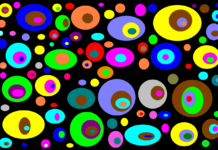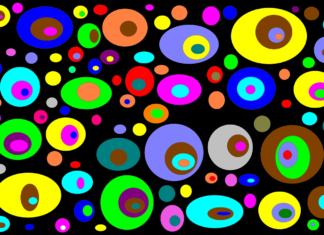Manim, short for Mathematical Animation Engine, is a powerful open-source software library that has revolutionized the field of mathematical animation. Developed by Grant Sanderson, the creator of the popular YouTube channel “3Blue1Brown,” Manim has gained immense popularity among mathematicians, educators, and content creators for its ability to bring mathematical concepts to life through visually stunning animations.
At its core, Manim is a Python library that provides a framework for creating high-quality mathematical animations. It offers a wide range of features and functionalities that make it a versatile tool for visualizing complex mathematical concepts, demonstrating proofs, and explaining mathematical phenomena in a captivating and engaging manner. Manim has become a go-to resource for educators looking to enhance their mathematics instruction, researchers exploring new mathematical ideas, and content creators seeking to produce visually appealing educational videos.
One of the key strengths of Manim is its flexibility and customizability. The library provides a rich set of tools and functions that allow users to create animations with precise control over every aspect of the visual representation. From controlling the position and size of objects to manipulating their colors, styles, and animations, Manim provides a granular level of control that enables users to create visually stunning and highly informative mathematical animations.
Manim also excels in its ability to handle complex mathematical equations and visualizations. It supports the use of LaTeX, a popular typesetting system for mathematical equations, making it easy to create equations and symbols with mathematical precision. With Manim, users can seamlessly integrate mathematical equations into their animations, ensuring accuracy and clarity in their visual representations of mathematical concepts.
Additionally, Manim offers a wide range of predefined geometrical shapes, mathematical objects, and animation transformations that users can leverage in their creations. Whether it’s plotting graphs, animating geometric transformations, or visualizing mathematical patterns, Manim provides a rich set of tools and utilities that simplify the process of creating intricate and dynamic mathematical animations.
One of the standout features of Manim is its ability to generate animations in real-time. This means that users can see the animation being rendered as they write the code, providing immediate feedback and allowing for quick iterations and adjustments. This real-time rendering capability not only enhances the efficiency of the animation creation process but also facilitates a deeper understanding of the mathematical concepts being visualized.
Moreover, Manim offers a highly modular and object-oriented design, making it easy to organize and reuse code across different projects. The library provides a comprehensive set of classes and methods that encapsulate various mathematical concepts and animation techniques, allowing users to build upon existing functionalities and create complex animations with ease. This modular design encourages code reusability, promotes good programming practices, and enables collaboration among users in the Manim community.
Another noteworthy feature of Manim is its support for 3D animations. While the library initially focused on 2D animations, it has evolved to include robust support for 3D visualizations, opening up new possibilities for creating immersive and interactive mathematical animations. With the ability to manipulate 3D objects, simulate physical phenomena, and explore spatial relationships, Manim enables users to delve into three-dimensional mathematical concepts and create captivating visual experiences.
Furthermore, Manim provides various camera control features that allow users to define viewpoints, zoom levels, and perspectives in their animations. This flexibility enables users to guide the viewer’s focus and highlight specific elements of the mathematical visualization, enhancing clarity and comprehension.
In addition to its extensive feature set, Manim boasts a thriving and supportive community. The Manim community is composed of mathematicians, educators, researchers, and enthusiasts who actively contribute to the development of the library, share their creations, and provide assistance to fellow users. The community-driven nature of Manim fosters a collaborative and inclusive environment, where users can learn from one another, exchange ideas, and collectively push the boundaries of mathematical animation.
In conclusion, Manim has emerged as a game-changer in the field of mathematical animation. Its robust features, flexibility, real-time rendering, 3D support, modular design, and vibrant community make it a go-to tool for mathematicians, educators, and content creators alike. With Manim, mathematical concepts come alive, complex equations become intuitive, and learning becomes an immersive and enjoyable experience.
Powerful Mathematical Visualization:
Manim provides a wide range of tools and functionalities for creating visually stunning mathematical animations. It supports the rendering of complex mathematical equations, symbols, and geometrical shapes with precision and clarity.
Real-Time Rendering:
One of the standout features of Manim is its ability to generate animations in real-time. Users can see the animation being rendered as they write the code, allowing for immediate feedback, quick iterations, and a seamless creation process.
Customizability and Control:
Manim offers a high level of customization, allowing users to have precise control over every aspect of the animation. Users can manipulate the position, size, colors, styles, and animations of objects, enabling them to create visually appealing and informative mathematical animations.
Modular and Object-Oriented Design:
Manim follows a modular and object-oriented design, making it easy to organize and reuse code across different projects. It provides a comprehensive set of classes and methods that encapsulate various mathematical concepts and animation techniques, promoting code reusability and collaboration.
3D Animation Support:
While initially focused on 2D animations, Manim has expanded its capabilities to include robust support for 3D visualizations. Users can manipulate 3D objects, simulate physical phenomena, and explore spatial relationships, opening up new possibilities for creating immersive and interactive mathematical animations.
In addition to its key features, Manim has had a profound impact on the way mathematical concepts are communicated and understood. It has become a powerful tool for educators, mathematicians, and content creators to bridge the gap between abstract mathematical ideas and visual representations. Let’s explore some of the ways in which Manim has transformed the landscape of mathematical communication.
One of the notable contributions of Manim is its ability to make mathematics more accessible and engaging for learners of all levels. Traditionally, mathematics has been perceived as an intimidating subject due to its abstract nature and reliance on symbols and equations. However, Manim breaks down these barriers by providing a visual and interactive medium for exploring mathematical concepts. Through animated visualizations, learners can grasp complex mathematical ideas in a more intuitive and tangible manner, making the learning process more enjoyable and effective.
Moreover, Manim has played a crucial role in promoting a deeper understanding of mathematical concepts. By visualizing mathematical principles in action, learners can witness the underlying patterns, transformations, and relationships that often go unnoticed in traditional mathematical representations. The dynamic nature of Manim’s animations allows learners to observe how mathematical structures evolve and interact, fostering a deeper appreciation for the beauty and elegance of mathematics.
Manim has also empowered educators to create immersive and personalized learning experiences. With the ability to customize animations, educators can tailor their visualizations to suit the specific needs and learning styles of their students. They can create step-by-step animations to guide learners through complex problem-solving processes, provide interactive elements to encourage exploration, and present real-world applications of mathematical concepts. This versatility enables educators to create engaging and interactive lessons that resonate with students and facilitate deeper understanding.
Furthermore, Manim has expanded the possibilities of mathematical exploration and research. Mathematicians can use the software to illustrate intricate proofs, visualize mathematical theorems, and showcase novel mathematical discoveries. The visual representations provided by Manim offer new insights and perspectives, allowing mathematicians to analyze mathematical structures from different angles and gain a deeper understanding of their properties. This has contributed to the advancement of mathematical research and the dissemination of new ideas within the mathematical community.
In addition to its impact on education and research, Manim has also revolutionized the way mathematical content is shared and consumed online. The availability of high-quality mathematical animations has transformed the landscape of online learning platforms, making educational content more engaging and accessible to a wide audience. Platforms such as YouTube and educational websites have witnessed an influx of visually appealing and informative mathematical videos, created using Manim. This has democratized access to mathematical knowledge and inspired a new generation of learners and enthusiasts to explore the wonders of mathematics.
Furthermore, the open-source nature of Manim has fostered a collaborative and inclusive community of users. Developers, educators, mathematicians, and enthusiasts from around the world come together to contribute to the development of Manim, share their creations, and provide support to fellow users. This collaborative environment encourages the exchange of ideas, the refinement of techniques, and the exploration of new possibilities. The collective efforts of the Manim community have resulted in continuous improvements to the software, expanding its capabilities and making it even more accessible to a broader range of users.
In conclusion, Manim has transformed the field of mathematical communication by bridging the gap between abstract mathematical concepts and visual representations. Its impact extends beyond its key features, as it has made mathematics more accessible, engaging, and understandable for learners of all levels. It has empowered educators to create personalized and immersive learning experiences, facilitated deeper understanding and exploration of mathematical ideas, and revolutionized the way mathematical content is shared and consumed online. Manim continues to be a driving force in the realm of mathematical animation, inspiring learners, researchers, and content creators to explore the beauty and intricacy of mathematics.






















